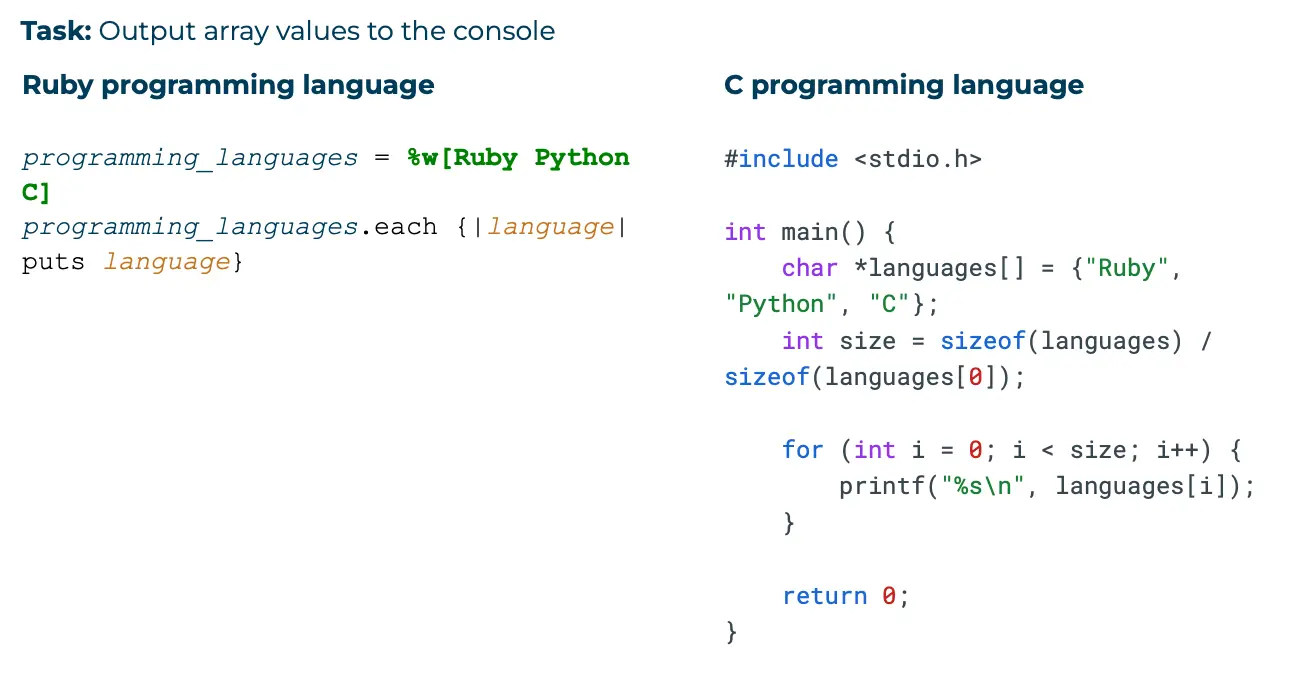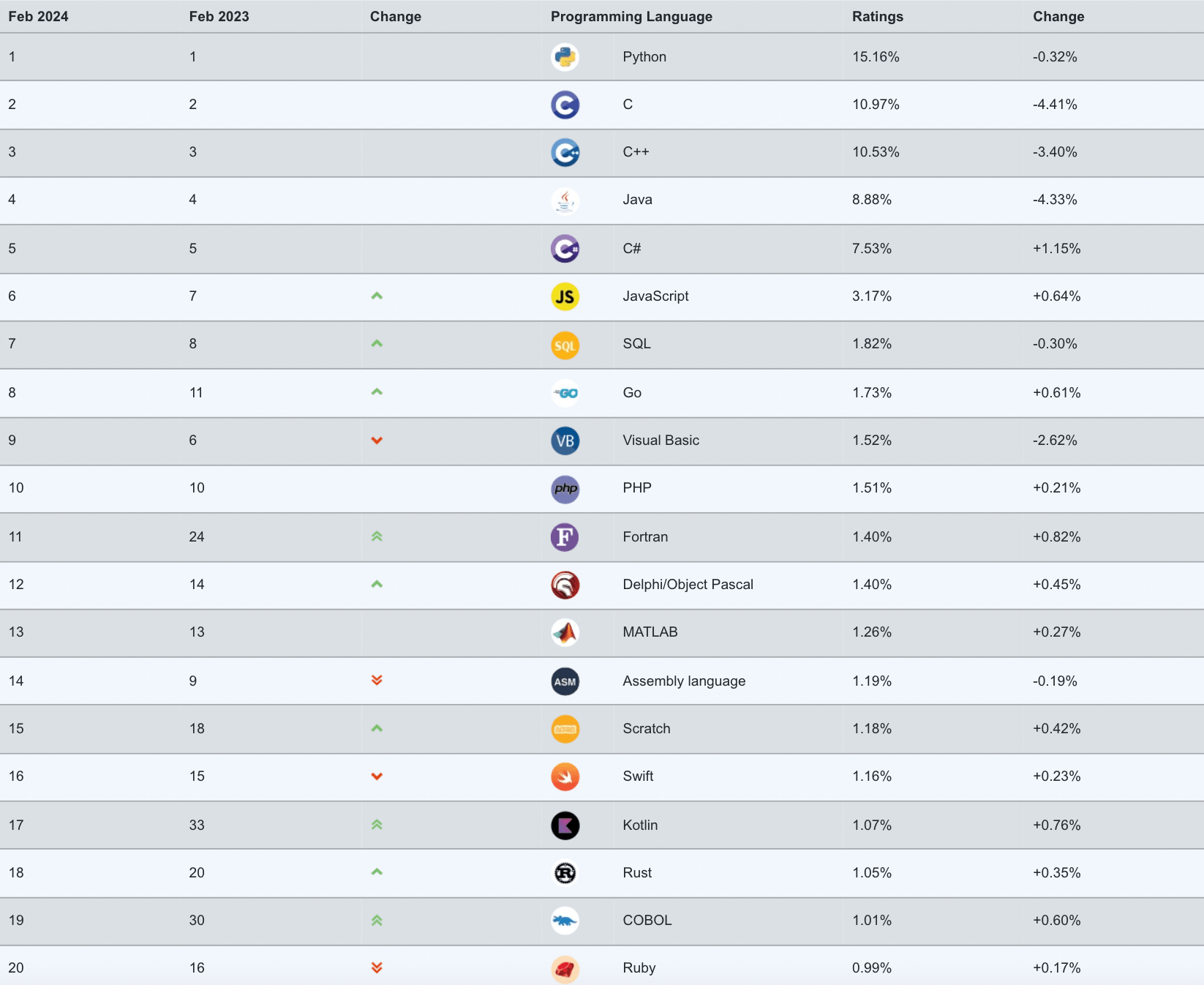In programming languages, Ruby stands out – not just for its elegance and power but also for the myths and misconceptions that swirl around it. In the SOFTSWISS in Faces series this February, we are exploring Ruby with Alina Leskova, Ruby Developer at SOFTSWISS. Her story shows how embracing change and new ideas can lead to great things. Alina is here to dispel the fog of myths surrounding Ruby, showcasing its ability to solve complex problems with simplicity and efficiency.
Q: How did you find your way to SOFTSWISS, and what drew you to focus on Ruby within the company?
My path to SOFTSWISS was less about fate and more about professional curiosity. My initial quest for merch led to a conversation with SOFTSWISS recruiters at a tech conference, which I highly recommend for networking and staying abreast of industry trends. This chance meeting sparked my interest in the company. I dove into researching SOFTSWISS, a step I recommend for anyone job hunting, as it reflects your dedication and understanding of potential employers.
What sealed the deal for me was the interview process at SOFTSWISS. It was an eye-opener to the company’s culture, revealing a team of experts passionate about their work. SOFTSWISS’ diverse opportunities for growth, both in skill breadth and career trajectory, convinced me that this was where I wanted to wield Ruby’s elegance and power.
Q: What made you choose the Ruby programming language, and why have you continued to use it throughout your career?
My journey to Ruby was formed by a broader understanding of programming. Having spent time with C/ C++ and Java, I sought a language that minimised boilerplate and focused on simplicity and expressiveness. Ruby’s syntax, which avoids excessive symbols like parentheses and semicolons, was a breath of fresh air. I was drawn to the elegance and compactness of Ruby compared to the rigid structures of languages like C++.
The decision was also influenced by a desire to stand out; I foresaw a crowded field of Python developers and chose Ruby to carve a unique path. This choice has been validated over time. Ruby allows developers to focus on high-level architectural and conceptual thinking rather than getting bogged down in the details of memory management and syntax quirks typical of more low-level languages.
Q: What’s the difference between Ruby and Ruby on Rails?
This is a common point of confusion. Ruby is the programming language, while Ruby on Rails is a framework built on Ruby. Rails provides a set of conventions and tools that streamline the development of web applications, significantly reducing development time. This makes Ruby on Rails particularly attractive for startups and projects prioritising speed and agility. Identifying as a Ruby developer versus a Ruby on Rails developer highlights different focuses within the same ecosystem.
Q: Ruby and Ruby on Rails are often associated with startups, yet they play a crucial role at SOFTSWISS. Why does SOFTSWISS continue to rely on Ruby for its projects?
The choice of Ruby at SOFTSWISS, like in many of my projects, stems from its unparalleled ability to manage complexity with elegance. Our projects often feature extensive and intricate backends where readability and maintainability are paramount.
Ruby excels in presenting complex logic in a way that’s accessible not just to current developers but also to newcomers. This ease of understanding and development is a significant advantage, especially compared to languages like Go, where managing similar complexity could become cumbersome. Ruby’s readability ensures that even the most layered backend systems remain approachable, facilitating ongoing development and support.
Q: Can someone outside the programming world understand Ruby code? How accessible is it?
Ruby stands out for its readability, making it more accessible than many other programming languages. While some specific conventions and structures might require a learning curve, Ruby’s syntax is designed to be intuitive. It’s often used to teach programming concepts because its code can almost serve as pseudocode, bridging the gap between technical complexity and conceptual understanding.

Q: How does educational background influence the ability to learn Ruby? Is formal education a necessity?
The journey into Ruby, and IT in general, often benefits from a structured understanding of deadlines and accountability – skills honed through formal education. Universities and retraining programs excel in cultivating a disciplined work ethic, which is crucial for navigating the project-based nature of development work. However, the essence of mastering Ruby transcends academic qualifications. It’s about embracing continuous learning and staying attuned to industry trends, a commitment to self-improvement that’s indispensable in the fast-paced world of technology.
Q: Would you recommend starting with a different language for those aspiring to learn Ruby? Can one dive directly into the IT world with Ruby?
While Ruby is user-friendly and powerful, beginning with a language taught in university courses, like C, can provide a solid foundation in programming concepts. This foundational knowledge makes it easier to understand Ruby’s advantages and why it’s chosen over other languages for specific projects. However, this depends on the individual’s learning path and goals. For a comprehensive grasp of development, starting with a language like C is beneficial.
Q: Despite Ruby being created in the 90s and facing competition from newer languages, what keeps it relevant and powerful in your view?
Ruby’s age has not diminished its relevance; it’s a testament to its enduring value. While newer languages like Go and Rust have merits, Ruby’s comprehensive toolset supports top-level programming.
Ruby’s flexibility frees developers from the constraints often encountered in other languages, enabling a focus on innovation and creativity. Its ability to abstract away the complexities of programming while providing a rich set of tools for development ensures that Ruby remains a vital part of the technological landscape.
Q: Ruby is perceived as a product of Japanese programming culture. Do you think a programming language’s origin influences its characteristics?
Absolutely. The creator’s vision plays a pivotal role in shaping a programming language. Ruby, for instance, was designed with the human experience in mind. Its creator wanted to make programming more about facilitating human-machine interaction rather than just machine comprehension. This human-centric approach is woven into Ruby’s DNA, making it suited for complex logic and user-friendly software development. Ruby’s philosophy underscores the importance of developer enjoyment and efficiency, reflecting the cultural nuances of its inception.
Q: The Ruby community seems quite vibrant and open. Is this openness reflective of the language itself?
Definitely. The Ruby community embodies the language’s core philosophy of simplicity and productivity. Far from the cliché of the solitary programmer, Ruby enthusiasts are incredibly collaborative, actively sharing knowledge through gems, conferences, and forums. This culture of exchange and mutual support is not just about code; it’s about building a welcoming space for developers to grow and innovate together.
Q: What is the Ruby programming language used for?
Ruby’s versatility shines in its ability to articulate complex backend systems and unique architectural designs. An example is the development of the SOFTSWISS CMS system, which stands out due to Ruby’s ability to simplify complex business logic. This adaptability speaks to Ruby’s strength in creating innovative solutions that are as intricate as they are, catering to a diverse array of applications that require a nuanced approach to problem-solving.
Q: Given the vast array of programming languages, how does Ruby stand in the current market?
When I first embraced Ruby, I was aware of its niche status and the potential challenge in job mobility due to the scarcity of Ruby specialists. Yet, this rarity has advantages, offering visibility and opportunities within the tech community. Despite the rumours, Ruby still needs to be made obsolete. It’s the seasoned veteran of programming languages – resilient and reliable. The initial hype has settled, yet Ruby maintains a steady demand for its robust capabilities in developing large-scale projects and applications.
Looking at the TIOBE index, we can see that Ruby has kept a steady place since 2018. This shows that Ruby remains popular among programmers, even as new technologies keep appearing.

According to the TIOBE Programming Community index, a benchmark for the popularity of programming languages, Ruby consistently holds its ground in the top 20.

Q: Looking to the future, how do you see Ruby’s place in the programming world in 2025?
Ruby’s future is bright. Despite the occasional scepticism comparing it to languages like JavaScript, Ruby has carved out a niche that ensures its longevity. Its efficiency and vibrant community make it a staple for startups and established companies. Ruby continues to evolve, and its ability to adapt and serve the needs of developers ensures that it will remain relevant. The key is following your passion. For those drawn to Ruby, there’s a rich and rewarding path ahead.
Q: Every programming language has its drawbacks. What are Ruby’s, in your opinion?
Indeed, no language is without its imperfections, and Ruby is no exception. Its primary challenge lies in performance speed, particularly when compared to newer technologies like Go and Rust, which are significantly faster and more suited for high-load applications.
Similarly, Elixir, though sharing a lineage with Ruby, offers greater fault tolerance. These comparisons highlight areas where Ruby can grow. Despite these hurdles, the Ruby community remains passionate, continually refining the language’s architecture to enhance its resilience and efficiency.
Q: How do you incorporate AI into your work in today’s rapidly evolving tech landscape?
AI has carved out its niche in our development toolkit, particularly for generating text databases. However, I maintain a cautious stance on using AI for coding. AI is an advanced tool akin to a more sophisticated Google search, offering insights and solutions rather than direct code generation. The idea that AI could replace human developers is a misconception. While AI can aid in problem-solving and research, a developer’s creative and analytical prowess is irreplaceable, ensuring that our roles evolve rather than diminish.
Q: Any advice for young developers or those aspiring to enter IT?
Embarking on a career in development is a journey marked by perseverance, curiosity, and a willingness to tackle challenges head-on. It’s crucial to embrace the entirety of a task, understanding it from inception to completion. More than relying solely on tools like AI for solutions are required; a true developer can articulate the logic behind their code and the decisions that shaped it.
Ruby’s philosophy, guided by the “principle of least surprise,” underscores the importance of predictability and clarity in programming. This principle, ensuring that code behaves in the most anticipated manner, is a metaphor for the developer’s path: you should strive for understanding and foresight in your work, navigating the complexities of coding with a blend of knowledge and intuition.
For those inspired to master the depths of Ruby and Ruby on Rails, here is the list of resources:
- Essential guides and tutorials: ruby-lang.org.
- Interactive Ruby learning platform: try.ruby-lang.org.
- ‘Ruby Under a Microscope’, a book for in-depth Ruby insights by Pat Shaughnessy.
- Comprehensive Rails guides: rubyonrails.org.
- Practical Ruby on Rails screencasts: railscasts.com.
